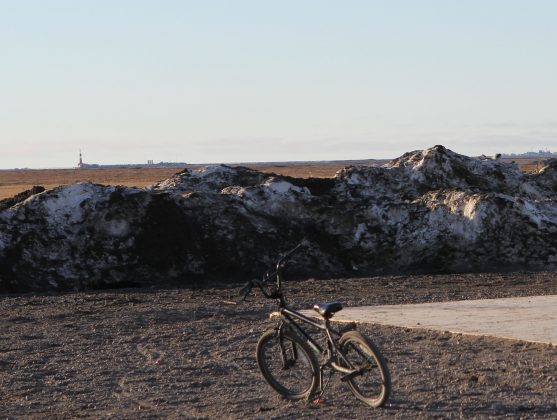
As Alaska slowly moves into spring after a long pandemic winter, many residents are looking to hit the road on bicycles. But Alaskans looking to purchase new bikes may find there’s not a wide selection to chose from.
The bicycle shortage began last year for many Alaska retailers.
Greg Whisenhant, owner of Beaver Sports in Fairbanks, said he wasn’t prepared for what he calls the tidal wave of demand consumers displayed a year ago. Everyone, it seemed, wanted a new bike. But as bikes rolled out of the shop, replacing them wasn’t easy.
“We found out that the fill-ins had already been cleaned out of the warehouses in all the Lower 48 states by all the other bike shops in the Lower 48, who had their spring hit them a little bit earlier and had already ordered everything that was left in the warehouses,” he said.
Stephen Frothingham, editor of Bicycle Retailer Industry News said most U.S. retailers were caught off guard by the 2020 spike in demand for bikes — a perfect socially distant way to get outdoor exercise during the pandemic.
But 2019 tariffs imposed by then-President Trump on China, a major manufacturer, had already soured supply lines. China’s efforts to battle COVID-19 sometimes shuttered factories for weeks. Fast forward to this spring and Frothingham sees a repeat of last year as shipping delays and high demand collide.
“Part of the problem is that the allocation or the distribution is a little uncertain. It seems a lot of the bikes are going to a handful of the largest brands, and then the brands are selling them to a handful of the largest retailers,” he said.
Besides a relative scarcity of bikes, Frothingham said to expect higher prices.
“It’s supply and demand but it’s also hugely increased shipping costs. Higher costs coming out of Asia. Even exchange rates are unfavorable. Commodity costs like aluminum, steel have gone up, so there’s a lot of factors contributing to it,” he said.
Frothingham said these issues also affect bike parts, as major manufacturers and retailers scoop up the majority of components.
At Beaver Sports, Greg Whisenhant said they’re doing their best to meet another tidal wave of biking enthusiasts, but stocks are low. He anticipates delays in supplies as he looks forward.
“We’re trying to look way ahead down the road. We already have bicycles ordered for the year 2022,” he said.




